#hiragana
Text
An aquarium toilet in Akashi, Hyōgo. Japan
Follow us for more contents ValiantJapanese
826 notes
·
View notes
Text
please reblog for a larger sample size、あれがとう!!
#japanese#learning japanese#japanese vocabulary#hiragana#japan#日本語#日本#lemme be happy with my kanji practice hwbeb#okay pls voteeee#naruto
238 notes
·
View notes
Text

꧁★꧂
#decora#decora fashion#alt fashion#fashion#cell phones#cellphone camera#bow#hair clips#pink#hiragana#cute#kawaii#flickr#oldweb#old web#2008
286 notes
·
View notes
Text
Learning a language is more accessible than it's ever been
Really.
There's such a wide variety of free lessons, resources, communities, and language exchanges.
This is especially true for Japanese and other languages not commonly taught in schools.
We've been running a mildly successful Discord server for a few years now (500+ members), but now we want to use our knowledge and experience to provide *free* lessons, utilizing *free* resources in every format possible, which will eventually span from N5-N1 fluency levels.
Our lesson posts will have "homework", which are apps, websites, or Youtube videos you can use to practice what you have learned, which you can pick and choose what homework format you prefer.
Don't want to download Duolingo for our first lesson's practice? Watch JapanesePod101's Youtube video on the topic instead. Don't like that? Try the link to Tofugu which covers the same topics as our lesson.
We will also cover topics such as language exposure when you can't visit the country, exercises, community games held on our Discord (we're working on Japanese Trivia Monopoly for N5 right now), streams, and more just like we always have in our Discord server!
Ready to learn Japanese, for free, regardless of skill level?
Here's the link to sign up to our Discord server.
We can't wait to see you there!
またね~

#japanese studyblr#studyspiration#study#japanese#nihongo#japan#japanese culture#japanese language#japanese learning#japanese vocabulary#learn japanese#learning japanese#kanji#hiragana#katakana
233 notes
·
View notes
Text

"When in Japan - Learning Nihongo"
Learning the language will help you conveniently read the signs and interact with locals when you visit Japan.
by Jose Maria Tiquia
#art#cartoon art#cartoon#comic#comic strip#vector#drawing#cartoon illustration#illustration#illustrator#digital art#japan#japanese#nihongo#language#study#learning#hiragana#katakana#kanji#artworks#tiquiajomari
99 notes
·
View notes
Text

#architecture#japan#street#building#street photography#urban photography#urban#city#tokyo#urban landscape#facade#house#home#design#laundry#sunny#typography#signage#kanji#hiragana#streets#streetscape#street scene#city streets#cityscape#buildings#streetshot#urban life#urban exploration#東京
31 notes
·
View notes
Text
I find it very funny that some people try to point at the "I wanted to be a good dragon" as being bad dialogue and proof Engage is badly written when it does the exact opposite.
I know you are tired of hearing it but allow me to repeat it. Just once more. Past Alear is someone who use hiragana, an alphabet use mainly by kids in anime and in jpn media.
That is what makes their dialogue in chapter 24 so unsettling. This shows that Past Alear has the emotional maturity of a child. This is a childish dialogue devoided of emotions, where the characteristic of the hiragana lacking the polysemy of kanji is making this dialogue feels even colder, even more robotic, mecanic, empty, devoided of emotions. Hiragana is used to show how broken past Alear is as a child whose innocence was completely destroyed.
However, in this cutscene of chapter 22, the use of hiragana is no longer to convey this feeling. This time, it's to convey a warm feeling, letting Alear's childish personality of that time shines as them showing their innocent side, their weaker and true side to Lumera. it's them dropping the facade, and finally revealing what they were concealing when we meet them in chapter 24 : an innocent, kind child. You don't even need to turn off Alear's voice and hear how the performance changed to realize that because you can see this from the models. How Past Alear's blank and emotionelss gaze in chapter 24 contrast to the one bright and tender gaze they gave to Lumera in chapter 22. The sentence they speak is no longer intended to be read as emtioneless because of this, because now the property of the hiragana as conveying the childish innocent feeling, like it does with Veyle, is the one aspect exploited in this scene. It's to show Alear's innocence and child like nature, their warmth. This immediately makes their "tadashii ryuu ni naremasen" all the more tragic. They speak this time with the tone matching the undertones of the hiragana, unlike how in the past they used that "childish" dialect with the tone of a robot. In fact, the change of tone in the voice shows the shift in tone despite how Past Alear still uses the same alphabet. All in context.
The same way Past Alear's politness express through the same conjuction and expression as current Alear but have a different nature because of the context, the same way Alear's incantations read as prayers/wish rather then commands/orders because of the context, the use of hiragana's meaning changes because of the context. This is no longer to express a broken child speaking, but to show Past Alear's innocence and to emphazize their love for Lumera by showing how they reveal themselves to her only.
#fire emblem engage#fire emblem#fe engage#alear fire emblem#fe alear#past alear#hiragana#lumera#bad dialogue my eye#repeat after me : dialogue having philosophical and “deep” subject doesn't equal to good writing#meta#meta ana#commentary#literary analysis#nictpicking#playing with semantics
68 notes
·
View notes
Text
Japanese alphabets - Learn Hiragana & Katakana
Start learning Japanese by mastering Hiragana & Katakana. It takes only 1 week to master them with MochiKana. Try it out!

27 notes
·
View notes
Text
I have to do the unthinkable.
I have to... I HAVE TO...
Actually learn Katakana properly in spite of it being less frequent because it still pops up everywhere like a speed bump.
I have some manga (well, three volumes of Bofuri) and games with Furigana now, so Katakana has suddenly become more of an obstacle to reading practice than Kanji 🙃
Below are many practice charts, which is how I went about Hiragana. I basically read through them as fast as I can. With Hiragana, I gradually added to which ones I read each day, so that's what I'm also going to do with Katakana.
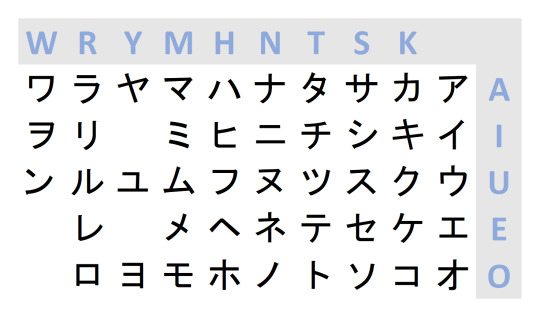

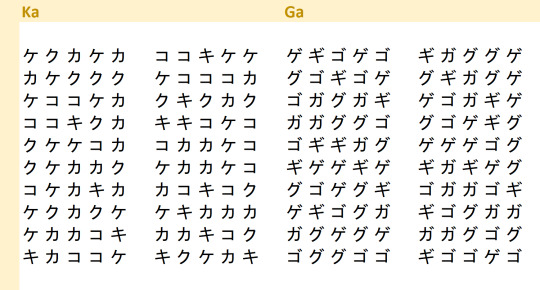

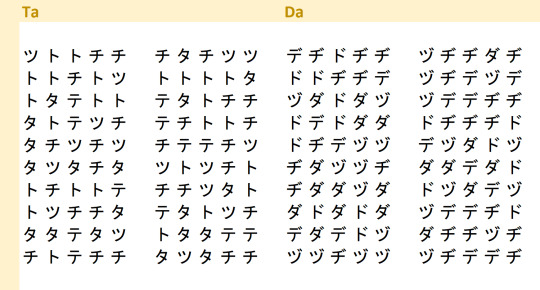




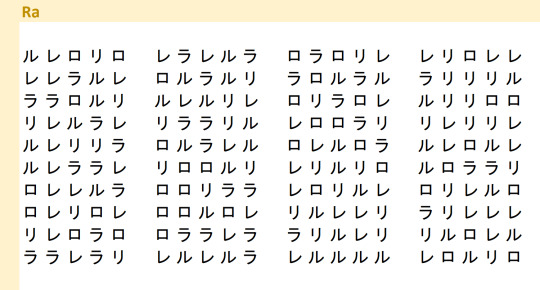
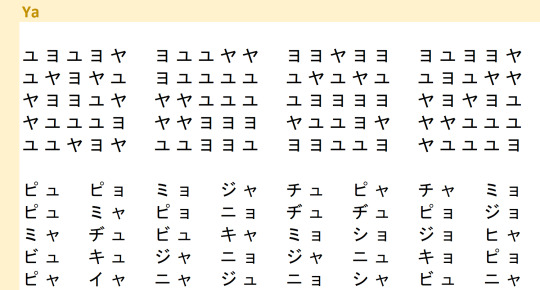


EDIT: I should note in the "W" column, it doesn't match up with the vowels on the right. It's Wa, Wo, and N. I THINK I was mimicking how it was written elsewhere.
I guess I may as well include the ones I made for Hiragana. I was worried about having too many images, but each of these are relatively small, so... It's fine. It's probably fine.
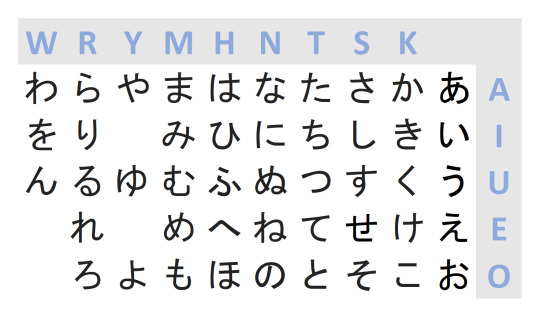



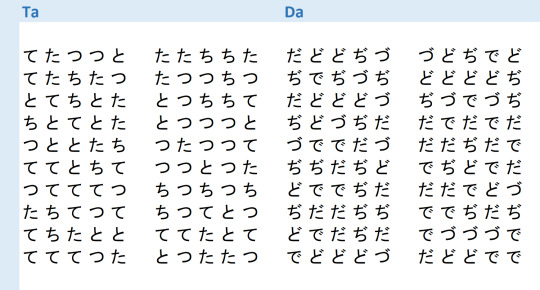
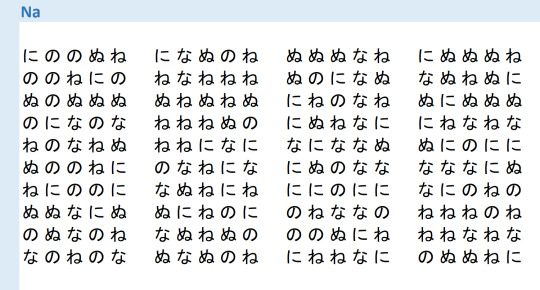

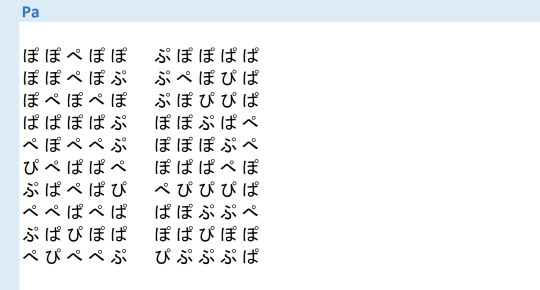
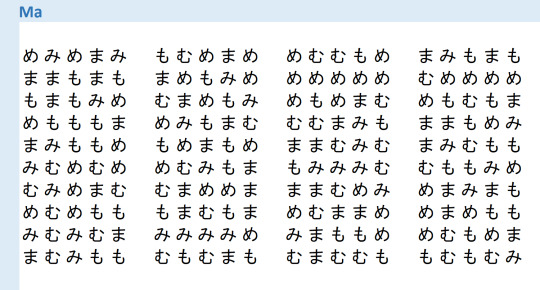
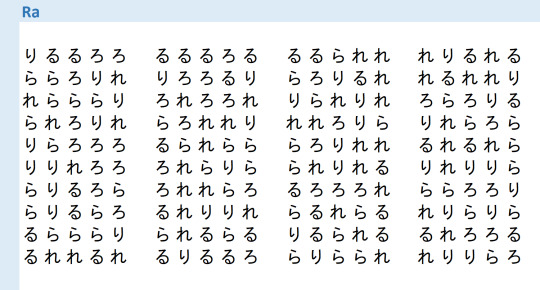



40 notes
·
View notes
Text
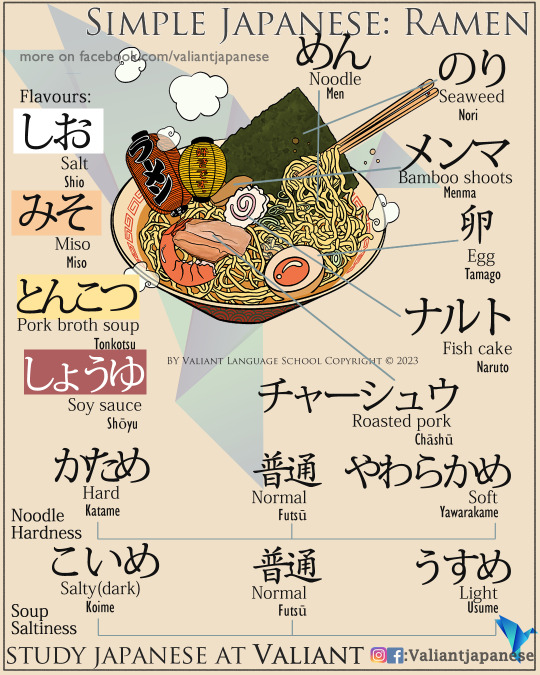
Simple Japanese: Ramen
Grab your latest Japanese language contents! Check
215 notes
·
View notes
Text
Japanese word of the day
いってらっしゃい (Hiragana)
行ってらっしゃい (Kanji)
pronunciation - itte-rashai

Meaning - have a good day or see you later.
Used with - family members leaving house, colleagues going for work trip, meetings etc.,
If you want to learn a bit more about the history of this word, please read more!
いっしょに日本語をべんきょうする!がんばってください!
Translation: let's study Japanese together! Let's work hard together!
Romanji: issho ni nihongo o benkyou suru! Gambatte kudasai!
I recently found out that this word which has come to mean have a good day, literally translates to "Go and come back!"
Basically the 行って (pronunciation: itte) means Go (or Journey, you will see this 行 Kanji in almost every sentence where something is leaving, going somewhere for example 行ってきます meaning "I'm going!') and (い) らしゃい (pronunciation: irashai) means come or welcome back
Basically,
行って + (い) らしゃい = Go + come back
Ko-San on Instagram explained it very well. The explanation goes like this -
In ancient Japan since there was no world order, anyone leaving on a work trip, or anything else from the village could die for various reasons. And Japanese people were firm believers of the power of words, this belief is called Kotodama. Therefore, by saying "Go and come back!" they are wishing their loved ones or colleagues a good journey.
#japanese#learning japanese#japanese vocabulary#hiragana#japan#anime#日本#日本語#kanji#katakana#spy x family#gifs#spy x family gifs#japanese word of the day#loid forger#anya forger#yor forger
50 notes
·
View notes
Text
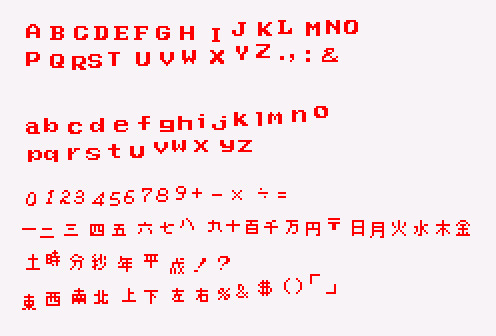

꧁★꧂
#text#alphabet#letters#numbers#hiragana#katakana#pixel#digital art#art#photoshop#flickr#oldweb#old web#2009
61 notes
·
View notes
Text
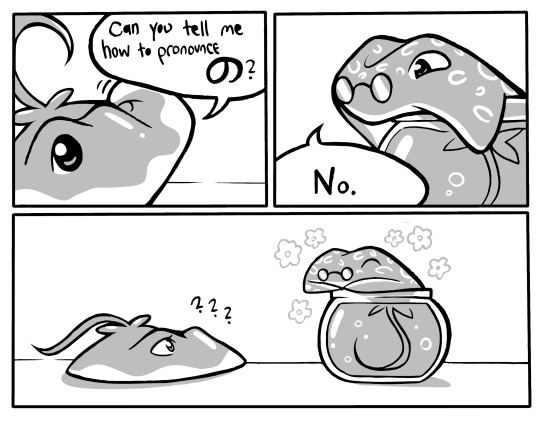
Sometimes it can be hard to communicate 😅
Download our free book to learn hiragana!
#an oldie but a goodie#japan#japanese#japanese language#learn japanese#nihongo#hiragana#learn hiragana
101 notes
·
View notes
Text
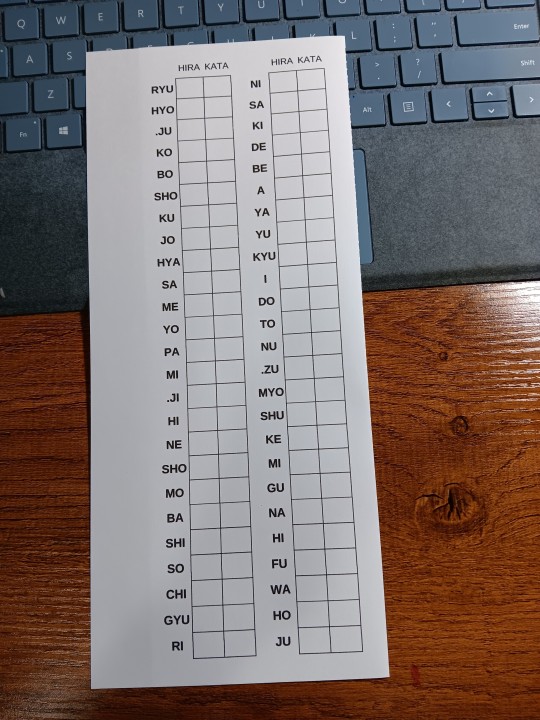
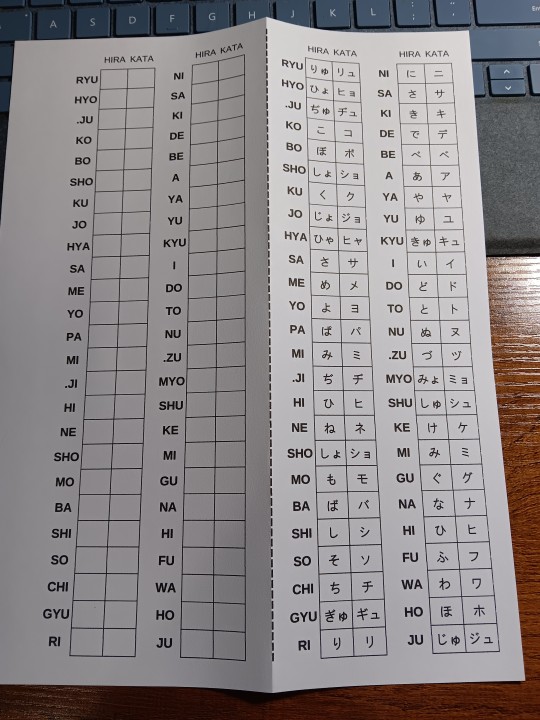
Here's the non-art project I was working on. Kana-writing quiz sheets! The characters are randomly selected from a list of all the kana syllables, including diacritics and diagraphs.
The first half of the sheet has romaji and two blank spaces for writing the hiragana and katakana versions on the syllables. The second half of the sheet, intended to be folded out of sight, contains the answer key.
Hitting delete on any blank space(or changing the document in any way) will reroll the sheet. (The white cells directly to the right of the katakana squares are NOT blank, just whited out, and contain info vital for the sheet to work) [NOTE: You will need to download the document and open it in OpenOffice or LibreOffice for this to work. In Google drive it's just a static sheet]
It's intended to be printed out and used as a daily quiz/refresher. The left margin is wide enough to allow for a three hole punch or whatever binding option you prefer.
Diacritical characters in the T group that have the same Hepburn romanization as characters from other groups are noted with a period in front of the Romaji.
If that would help you, you can grab it here!
Google Drive - Kana Writing Quiz
And if you share offsite it would be real cool and decent of you to credit me.
#katakana#hiragana#japanese study resources#japanese#japanese worksheets#japanese language#japanese study
36 notes
·
View notes
Text

#architecture#japan#street#building#street photography#urban photography#urban#city#tokyo#urban landscape#kanji#typography#hiragana#signs#signage#house#facade#home#japanese architecture#architettura#architectural#streetscape#street scene#city streets#streetshot#cityscape#buildings#urban life#urban fantasy#city life
25 notes
·
View notes
Text
More vocabularies from Totoro:
お父さん (Otousan) - Father
お母さん (Okaasan) - Mother
妹 (Imouto) - Younger sister
兄 (Ani) - Older brother
おばあちゃん (Obaachan) - Grandma
おじいちゃん (Ojiichan) - Grandpa
夜 (Yoru) - Night
星 (Hoshi) - Star
空 (Sora) - Sky
お弁当 (Obento) - Lunchbox
雨 (Ame) - Rain
風 (Kaze) - Wind
クスリ (Kusuri) - Medicine
お守り (Omamori) - Amulet
Royalty Free Music: https://www.bensound.com
License code: SVV29XKEGP6O5RQG
#nihongo#jlpt#learnjapanese#japanese language#jlptn5#hiragana reading practice#hiragana#learn kanji#japanese kanji#ghibli#totoro
83 notes
·
View notes